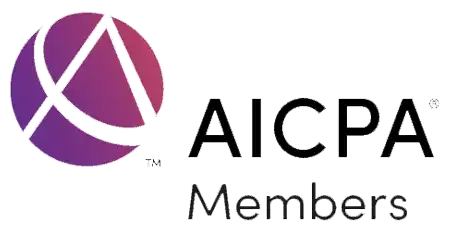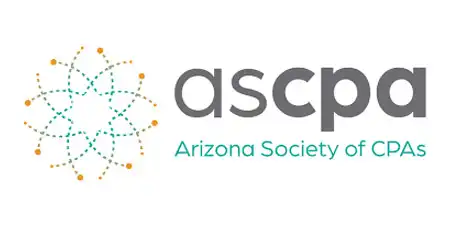The following are certain guidelines to assist not-for-profits in establishing and monitoring effective boards. We urge the reader to share these guidelines with other members of management and the board of directors.
Active and Engaged Boards
Complacent board members increase the risk of noncompliance with laws, regulations and the terms of contractual agreements. Also, the risk of asset diversion increases when board involvement lessens. The following are recommendations to enhance board involvement:
- Increase meeting effectiveness by maintaining written agendas for each meeting.
- Hold meetings on at least a quarterly basis, and require attendance. Nonparticipation should prompt a written notice, and habitual unexcused absences should result in board member dismissal.
- Keep the meeting time long enough to allow for meaningful discussions and analysis, while not being excessive. Meetings that extend beyond time that is necessary will result in less interest and involvement.
- Use technology to assist in involving board members who cannot attend board meetings in person.
- Use committees to facilitate board oversight and involvement.
- See Chapter 30 of Arizona Revised Statutes for specific laws governing board meetings.
Board Size and Structure
Board size will vary depending on the size and complexity of the not-for-profit organization and may change over time. Not-for-profit organizations should maintain ongoing efforts to recruit new board members who cover a sufficiently varied expertise in areas that will benefit the organization, such as finance, law, human resources, advertising, public relations, etc.
Board Independence
The IRS reviews charities’ board composition to determine whether the board represents a broad public interest and to identify the potential for insider transactions that could result in misuse of assets. The IRS also tries to determine whether an organization has independent members, stakeholders or other persons with the authority to elect members of the board or approve or reject board decisions, and whether the organization has delegated control or key management authority to a management company or other persons. Organizations that file Form 990 will find that the form asks specific questions about the governing body's independence.
Following are recommendations for maintaining board independence:
- At least two-thirds of the board of a public charity should be independent.
- Independent board members should not be compensated as employees or independent contractors.
- If compensated, independent board members should not have their compensation determined by individuals who are compensated by the organization.
- Independent board members should not directly or indirectly receive material financial benefits from the organization except as a member of the charitable class served by the organization.
- Independent board members should not be related to anyone compensated by the organization.
- IRS Form 990 requires disclosure of the number of independent board members.
Board Education and Communication
Not-for-profit organizations should strive to educate their board members and have a method of maintaining accountability. The following are recommendations to assist with such education and communication:
- All board members should have clear job descriptions.
- Board orientations are a critical component for conveying roles and responsibilities.
- Not-for-profit organizations should have a process for evaluating and communicating board performance.
- Use annual board member self-assessments to assist in the evaluation process.
- Have a documented process for removing non-performing board members.
Term Limits
Term limits are a matter of choice and can lead to a process of change in governance and oversight. If term limits are not used, the organization should consider ways to maintain active and productive board involvement through the evaluation process and the expression of appreciation for their service.
Executive Compensation and Excess Benefit Transactions
A charity is barred from paying more than reasonable compensation for services rendered. While the Internal Revenue Code does not require charities to follow a particular process in determining the amount of board and employee compensation, the compensation of officers, directors, trustees, key employees and others in a position to exercise substantial influence over the affairs of the charity should be determined by persons who are knowledgeable in compensation matters and who have no financial interest in the determination. Note: The excess benefit transaction rules are not applicable to 501(c)(6) organizations.
The Form 990 requires disclosure of the process used to determine the compensation of an organization’s top management official and other officers and key employees, including a review and approval by independent persons, comparability data and contemporaneous substantiation of the deliberation and decision. In addition, the Form 990 solicits compensation information for certain officers, directors, trustees, key employees and highly compensated employees.
The IRS has observed significant errors or omissions in the reporting of executive compensation on the IRS Form 990 and other information returns, and executive compensation continues to be a focal point in their examinations.
Conflicts of Interest
Directors of not-for-profit organizations should act in the best interest of the organization rather than in their personal interest or the interest of some other person or organization. Specifically, directors should avoid conflicts of interest that are detrimental to the organization.
The IRS encourages boards to adopt and regularly evaluate a written conflict-of-interest policy that requires directors and staff to act solely in the interests of the organization without regard for personal interests. The policy should include (a) maintaining written procedures for determining whether a relationship, financial interest or business affiliation results in a conflict of interest, and (b) prescribing a course of action when a conflict of interest is identified.
The IRS encourages organizations to require its directors, trustees, officers and others covered by the policy to disclose, in writing and on a periodic basis, any known financial interest that the individual, or a member of the individual’s family, has in any business entity that transacts business with the organization. The organization should regularly and consistently monitor and enforce compliance with the policy.
Understand Funding for the Not-for-Profit Organization
To provide sufficient oversight and support of management, board members should learn as much about the not-for-profit organization as possible. Board members should learn about the various programs and understand the challenges and opportunities of each.
This understanding should also encompass the organization's revenue and support and the related restrictions and legal requirements, including those pertaining to endowments and Federal and state grants and contracts.
The State of Arizona has adopted the Uniform Prudent Management of Institutional Funds Act, which places special requirements on board members of organizations with endowments. The act generally requires the governing board of an endowed organization to establish a spending policy and establishes a rebuttable presumption of imprudence for spending greater than 7% of the endowment in any given year. In addition, the board should have a general understanding of debt compliance requirements, including guarantees, if any.
Review of Governing Documents, Missions and Goals
The board has a fiduciary responsibility to perform periodic reviews of the organization's governing documents to determine whether operations are consistent with its articles of organization and bylaws. Although the Internal Revenue Code does not require not-for-profit organizations to have governance and management policies, the IRS will review an organization’s application for exemption and annual information returns to determine whether the organization has implemented policies relating to executive compensation, conflicts of interest, investments, fundraising, documenting governance decisions, document retention and destruction, and whistleblower claims.
Governing documents should be amended in a timely manner to reflect organizational changes. The IRS must be informed of significant changes to governing documents, policies and programs. This can be done through the use of an attachment to the Form 990. Care should be taken to ensure that changes do not affect an organization's tax exempt status.
As indicated in the preceding paragraphs, board governance takes substantial responsibility and commitment to ongoing improvement. We hope this summary will assist not-for-profit organizations in communicating board responsibilities and providing a method for monitoring the governance function.





